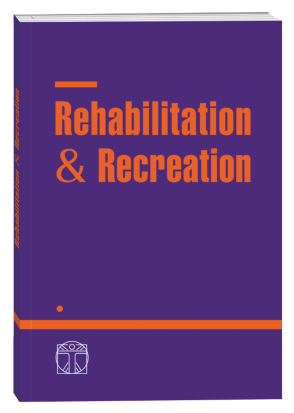ANALYSIS OF THE PROFILE OF PREDICTORS IN THE POTENTIATION OF STROKE AMONG STUDENT YOUTH
DOI:
https://doi.org/10.32782/2522-1795.2022.11.14Keywords:
predictors, stroke, students, questionnairesAbstract
The article presents a study of the analysis of the profile of controlled predictors in the potentiation of stroke among student youth. The research was conducted according to the plan of research work of the Department of Anatomy, Physiology, and Valeology of Drohobych State Pedagogical University named after Ivan Franko. Our study aimed to determine the profile of the presence of controlled predictors in the potentiation of stroke among students to optimize prevention. The research was based on an anonymous survey conducted on the Google form platform among first- and fourth-year students of the Ivan Franko State Pedagogical University. The sample consisted of 403 students (243 girls and 160 boys) aged 17–20. A detailed analysis of the representation of risk factors depending on the pathogenetic subtypes of stroke was conducted. Against the backdrop of the COVID-19 pandemic, a new cause-and-effect relationship with the SARS-CoV 2 virus has been established to potentiate cardioembolic stroke. It was found that the level of knowledge of students about risk factors and the possibility of control is not high enough: students do not sufficiently understand the importance of the role of behavioral factors in motivating and promoting health. It is determined that there are already leading risk factors and symptoms of vascular diseases of the brain among students. Low physical activity, poor diet, bad habits, long work at the computer, emotional stress, usage of oral contraceptives without a doctor’s prescription, and as a result, several risk factors in one person are being identified. It is substantiated that screening of children and youth provides, firstly, the establishment and active action on personally controlled risk factors, and secondly, the introduction of comprehensive information and educational system in educational institutions in today’s challenges, namely: the spread of NCDs, risk and the ability to provide home care, and thirdly, the calculation of controlled predictors of stroke will contribute to the development of health-preserving competence of the future teacher and the improvement and refinement of prevention strategies.
References
Боженко Н. Л. Профілактика інсульту: проблеми і перспективи. Вісник Львів. нац. мед.ун-т ім. Д. Галицького. Актуальні проблеми профілактичної медицини. 2015. Вип. 12. С. 51–56.
Зербіно Д. Д., Гринчишин Н З., Цюк І. І. Гострі порушення мозкового кровообігу у жінок: епідеміологія, етіологія та морфогенез. Український медичний часопис. 2008. Вип. 65 (3). С. 43–47.
Зозуля І. С., Мардзвік В. М. Мозковий інсульт у осіб молодого віку. Міжнародний неврологічний журнал. 2010. № 5. С. 7–17.
Мезенцева Н. І., Батиченко С. П., Мезенцев К. В. Захворюваність і здоров’я населення в Україні: суспільно-географічний вимір: монографія. Київ : ДП «Прінт Сервіс», 2018. 136 с.
Міщенко Т. С. Епідеміологія захворювань нервової системи в Україні. Український вісник психоневрології. 2015. Вип. 3 (84). С. 151–152.
Тріщинська М. А., Головченко Ю. І. Поширеність судинних факторів ризику в осіб із початковими проявами ішемії мозку. Міжнародний неврологічний журнал. 2014. Вип. 8 (70). С. 31–39.
Aggarwal G., Lippi G., Henry B. Cerebrovascular disease is associated with an increased disease severity in patients with coronavirus disease 2019 (COVID-19): a pooled analysis of published literature. Int J. Stoke. 2020. Vol. 15, No. 4. P. 385–389. DOI: 10.1177/1747493020921664
Aigner A., Grittner U., Rolfs A. Contribution of established stroke risk factors to the burden of stroke in young adults. Int J. Stoke. 2017. Vol. 48, No. 7. P. 1744–1751. DOI: 10.1161/STROKEAHA.117.016599
Ekker M. S., Verhoeven J. I., Vaartjes I. Stroke incidence in young adults according to age, subtype, sex, and time trends. Neurology. 2019. Vol. 92, No. 21. P. 444–454. DOI: 10.1212/WNL.0000000000007533
Gupta A., Bhatia R., Sharma G. Predictors of ischemic stroke in rheumatic heart disease. J Stroke Cerebrovasc Dis. 2015. Vol. 24. P. 2810–2815.
Kirkham F. J., Prengler M., Hewes D. K. Risk Factors for arterial ischemic stroke in children. J Child Neurol.2000. Vol. 15, No. 5. P. 299–307. URL: https://doi.org/10.1177/088307380001500506
Kivioja R., Pietilä A., Martinez-Majander N. Risk factors for Early-Onset ischemic stroke: a Case-Control study. J Am Heart Assoc. 2018. Vol. 7, No. 21. e009774. URL: https://doi.org/10.1161/JAHA.118.009774
Mehta P., McAuley D. F., Brown M. COVID-19: consider cytokine storm syndromes and immunosuppression. Lancet. 2020.Vol. 10229, No. 395. P. 1033–1034. DOI: 10.1016/S0140-6736(20)30628-0
Rodriguez C. J., Sacco R. L., Sciacca R. R. Physical activity attenuates the effect of increased left ventricular mass on the risk of ischemic stroke: the Northern Manhattan Stroke Study. J Am Coll Cardiol. 2002. Vol. 39. P. 1482–1488.
Downloads
Published
How to Cite
Issue
Section
License

This work is licensed under a Creative Commons Attribution-NonCommercial-NoDerivatives 4.0 International License.











